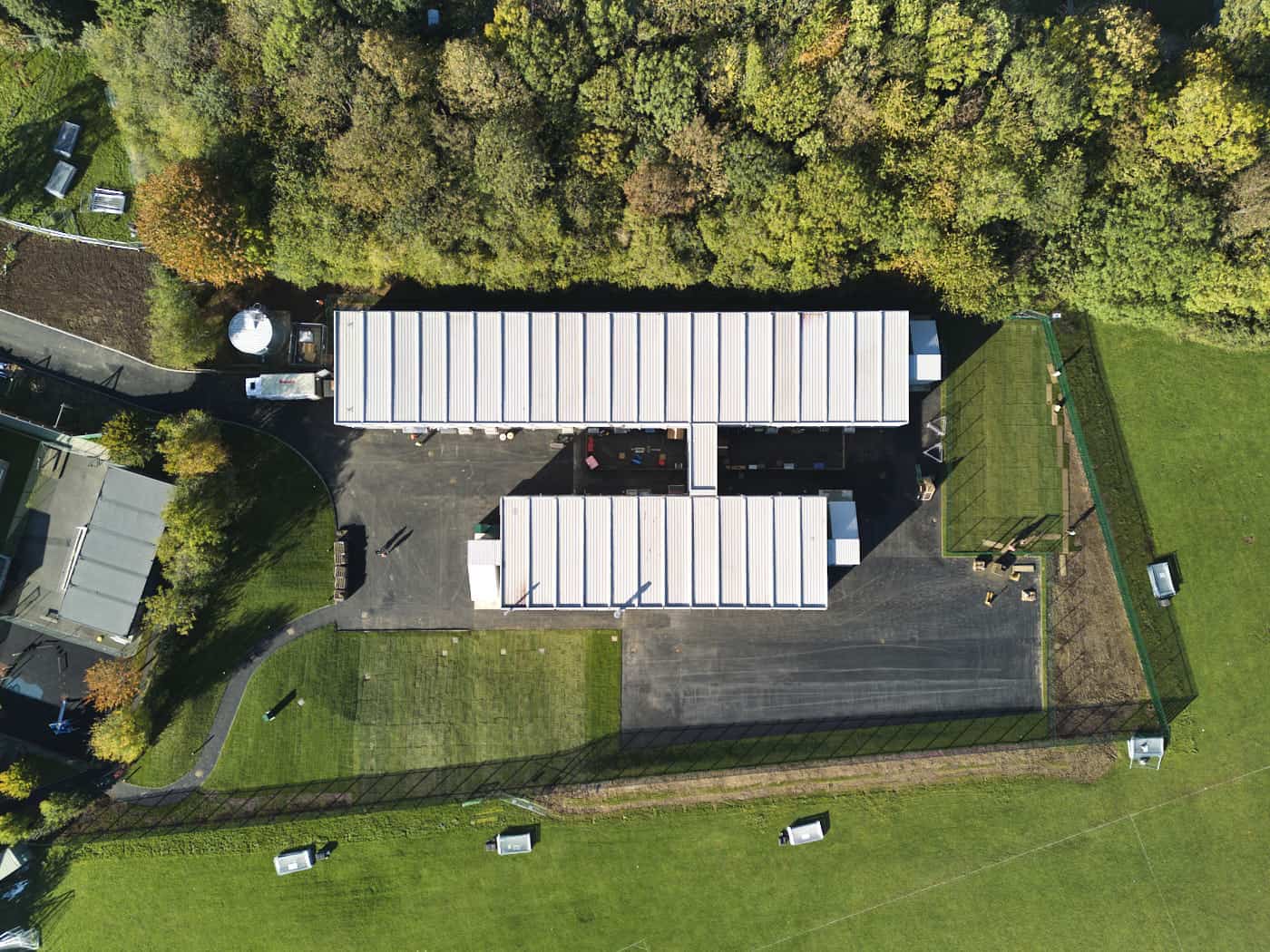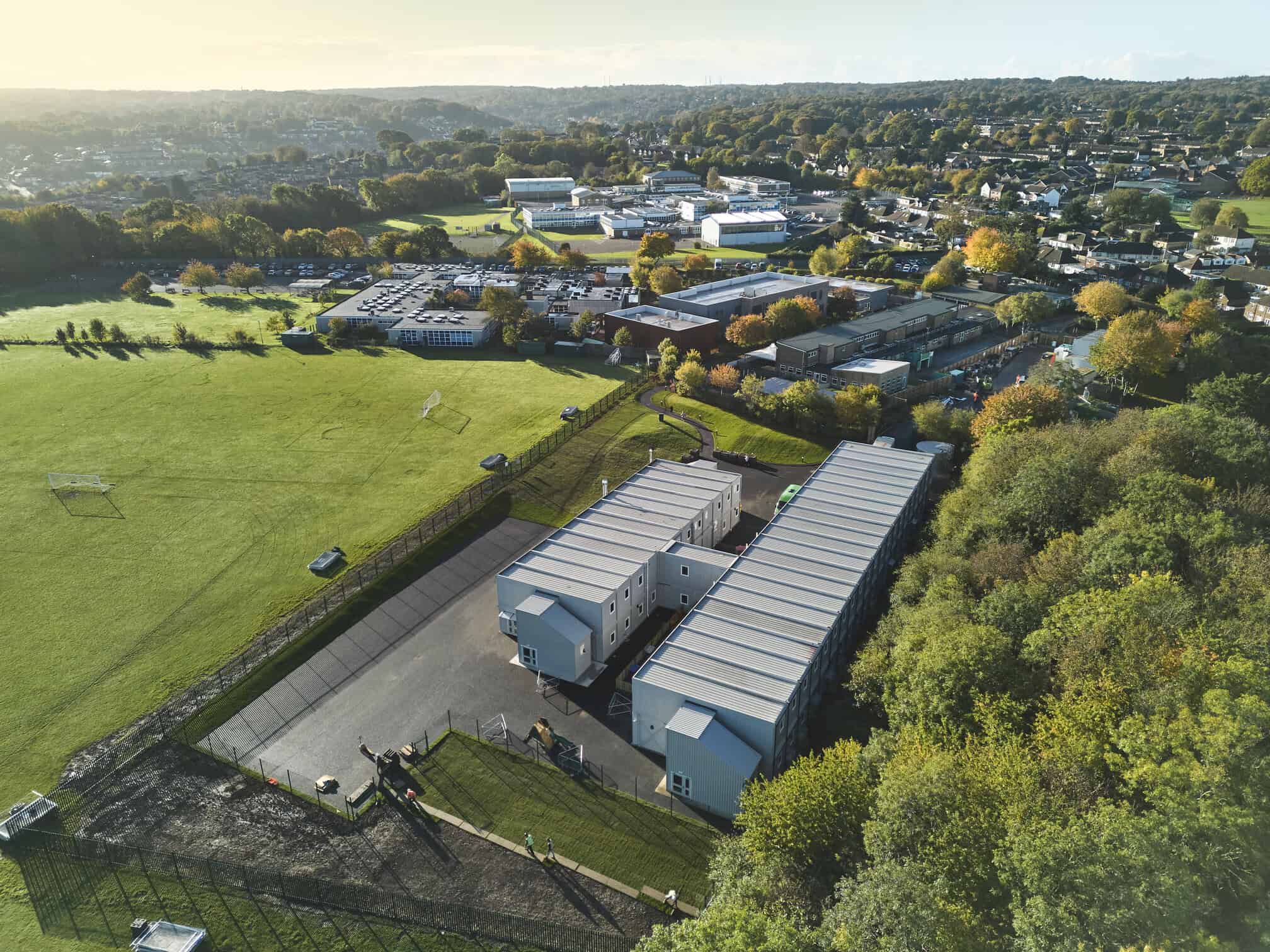Refurbishing Ministry of Defence (MoD) sites comes with several challenges. Despite having a surplus of buildings, it is essential that its existing residential accommodation is bought to good living conditions, resulting in high maintenance costs. As the Government’s net zero targets loom closer, new facilities must also integrate sustainability and prioritise energy-efficient features.
Certain locations are also receiving a high demand of new accommodation requests with tight deadlines, so it’s extremely important that the MoD receives the right type of building where and when it’s needed most.
With the MoD’s Modernised Accommodation Offer (MAO) setting new standards for Single Living Accommodation (SLA), how can we improve the quality of residential facilities for our armed forces personnel?
Given the challenges faced and the MoD’s commitment to modernising accommodation, modular buildings offer a practical, flexible and cost-effective solution. Don’t just take our word for it – look at how modular transformed RAF Coningsby’s accommodation offering!
Flexible design and application
The MoD needs to be able to react quickly to site changes, for example increasing accommodation of personnel in high-demand areas. Modular buildings can offer flexibility to defence sites and can be readily adapted as operational needs evolve.
Modular construction is versatile and can easily be reconfigured to create a variety of purpose-built spaces to suit a buildings purpose at any time over its use, lending itself to semi-permanent or temporary applications. Whether it’s residential blocks, communal spaces or welfare spaces, modular buildings can be tailor-made to meet the diverse needs of service personnel. Designs can also be reconfigured and expanded to meet the changing needs of defence sites. Take for example, at RAF Coningsby a bespoke accommodation wing was supplied for a two-year rental period, which could then be easily removed and repurposed to the bases future requirements.
Additionally, modular buildings have the flexibility to be delivered to more complex sites where traditional building methods may struggle. Offsite construction uses a controlled factory environment and once delivered to site, can be assembled in restricted areas, such as narrow, busy military bases. This flexibility is especially valuable in environments where traditional construction would be too costly or time-consuming.
By offering bespoke design, coupled with offsite manufacturing, modular benefits MoD infrastructure with innovative, functional, and adaptable spaces for their operations.
Cost-effective structures
Not only do modular buildings offer flexibility in design, but they also present cost-effective solutions. Modular building provides faster turnaround times, lower material costs and consistent high quality building solutions. Using factory-based manufacturing also means projects are less likely to be affected by weather delays, making budgets more controllable and predictable as the build, and materials, won’t be affected by adverse weather.
Flexible financing is available with the option to rent or purchase, helping to manage costs based on specific needs and budgets. Rented modular buildings, for example, have an advantage that helps you to spread your budget further. Long-term leases for modular buildings can be funded through operational expenditure (OpEx) budgets, reducing pressure on capital expenditure (CapEx) budgets. Flexible finance schemes from Premier Modular further enhance affordability, making it easier to align with budget constraints.
Quick installation
Another benefit of modular construction for MoD sites is that they offer a fast and efficient solution with quick installation and minimal onsite disruption. Beacon Barracks, for example, required a quick solution to construct a residential wing at its site to house 400 soldiers on their return home from Germany. Modular was the ideal solution, providing rapid accommodation with as little disruption to site as possible. It goes without saying that speed is essential for rapid deployment in crisis situations or urgent needs.
With offsite construction techniques, we can deliver buildings quickly, ensuring accommodation is installed exactly when it’s needed. Another benefit with offsite modular buildings is that there are fewer subcontractors involved. This means that there is less onsite labour, reducing the number of security clearances needed to get the team working on the site.
This approach significantly reduces programme times and causes less disruption to existing military operations, which is particularly important when working airside on RAF bases such as RAF Coningsby, who had 55 modules scheduled for install when aircraft were not flying.
Sustainability
New MoD buildings must align with the Government’s net zero targets, and modular buildings offer a suitable sustainable solution.
Offsite construction supports these goals in a number of ways. It reduces vehicle movements and material waste, minimising the environmental footprint of each project. In addition, we can incorporate a range of sustainable features, such as solar panels, air source heat pumps and rainwater harvesting systems, to help achieve BREEAM ‘Excellent’ ratings and further reduce the environmental impact.
Incorporating modular buildings into future plans can also contribute to a circular economy, recognising the purpose of the building and period it is needed for allows for use of semi-permanent structures, which can be removed and repurposed, capturing embodied carbon.
Our commitment to sustainability extends to manufacturing processes too, with facilities built with zero waste to landfill, lean manufacturing principles and a circular economy from our recyclable rental fleet. This approach not only cuts carbon emissions but also contributes to long-term cost savings.
Modular buildings present a versatile, cost-effective, and sustainable solution for refurbishing MoD sites. With their flexibility in design, quick installation, and minimal disruption, they provide an ideal way to meet the evolving needs of defence infrastructure.
To learn more about how modular buildings can transform MoD sites, take a look at our case studies here, or contact us to discuss your next project.










